PPC is in flux. That’s been true for a while, and it’s not going to change anytime soon. But while machine learning is completely remaking the industry (and will remake it even more in coming years), some aspects of PPC have stayed the same.
To show how PPC is changing and, in some ways, staying the same, we’ve picked twelve key charts, graphs, and statistics from recent PPC industry reports. You will probably see quite a few things here that echo your experience, but we hope there’s at least one surprise. You’re a PPC marketer, after all – you’re used to constantly learning.
- PPC still works.
Just in case you doubted it, PPC is still alive and well. 74% of brands in Hanapin Marketing’s State of PPC 2019-2020 report said “PPC is a huge driver for their business.” They report that “out of 200+ brand marketers, only five said that PPC performance was really poor for them this year.”
- Search still rules in PPC, but social, remarketing, and display ads are popular, too.
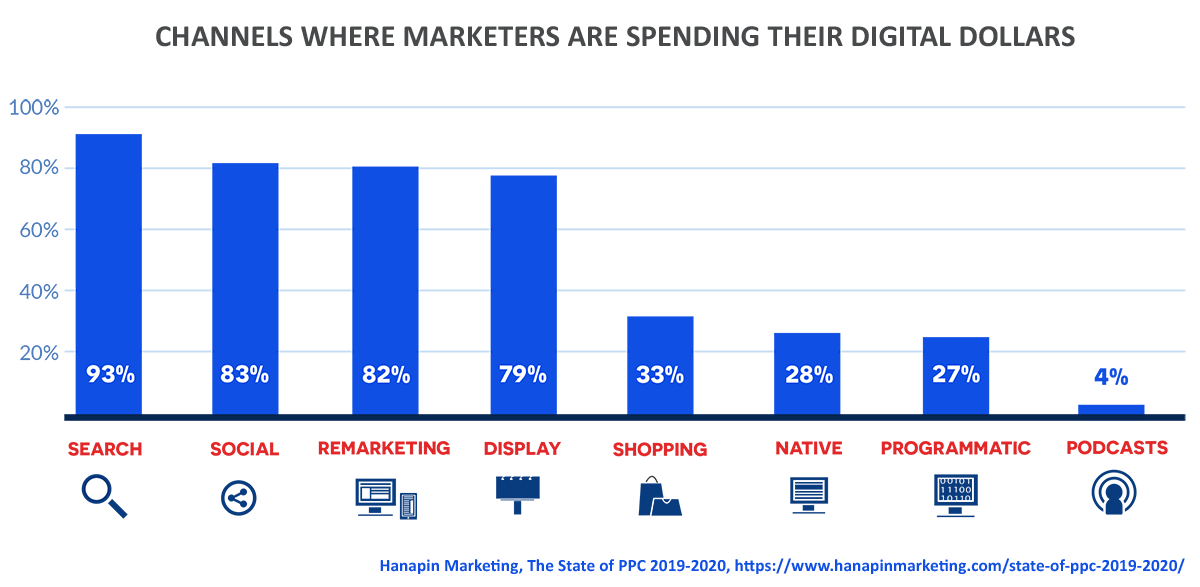 Unfortunately, display ads may lose their popularity soon. Hanapin revealed that many marketers are dissatisfied with the results they’re getting from display ads.
Unfortunately, display ads may lose their popularity soon. Hanapin revealed that many marketers are dissatisfied with the results they’re getting from display ads.
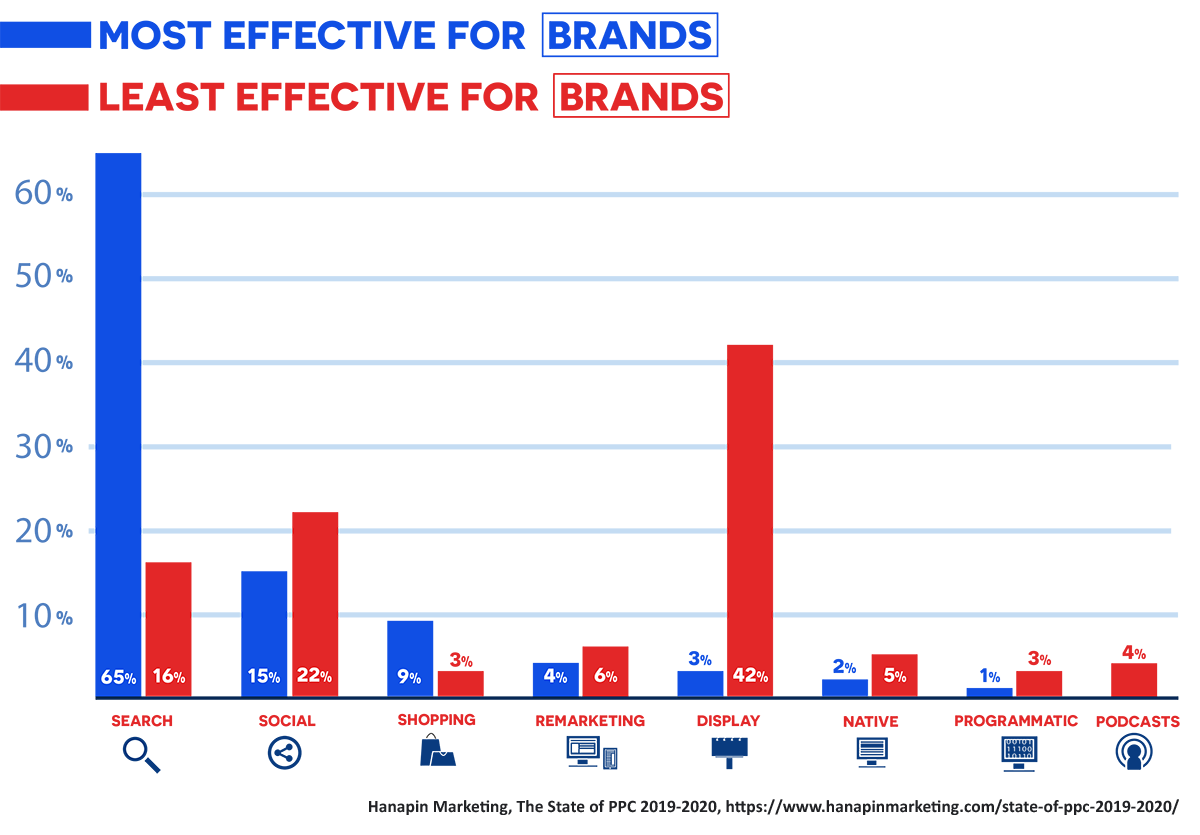
- “The duopoly” isn’t going anywhere.
Google and Facebook (known as “the duopoly” among many PPC marketers) continue to dominate PPC. Microsoft Ads are making a good show of things, though.
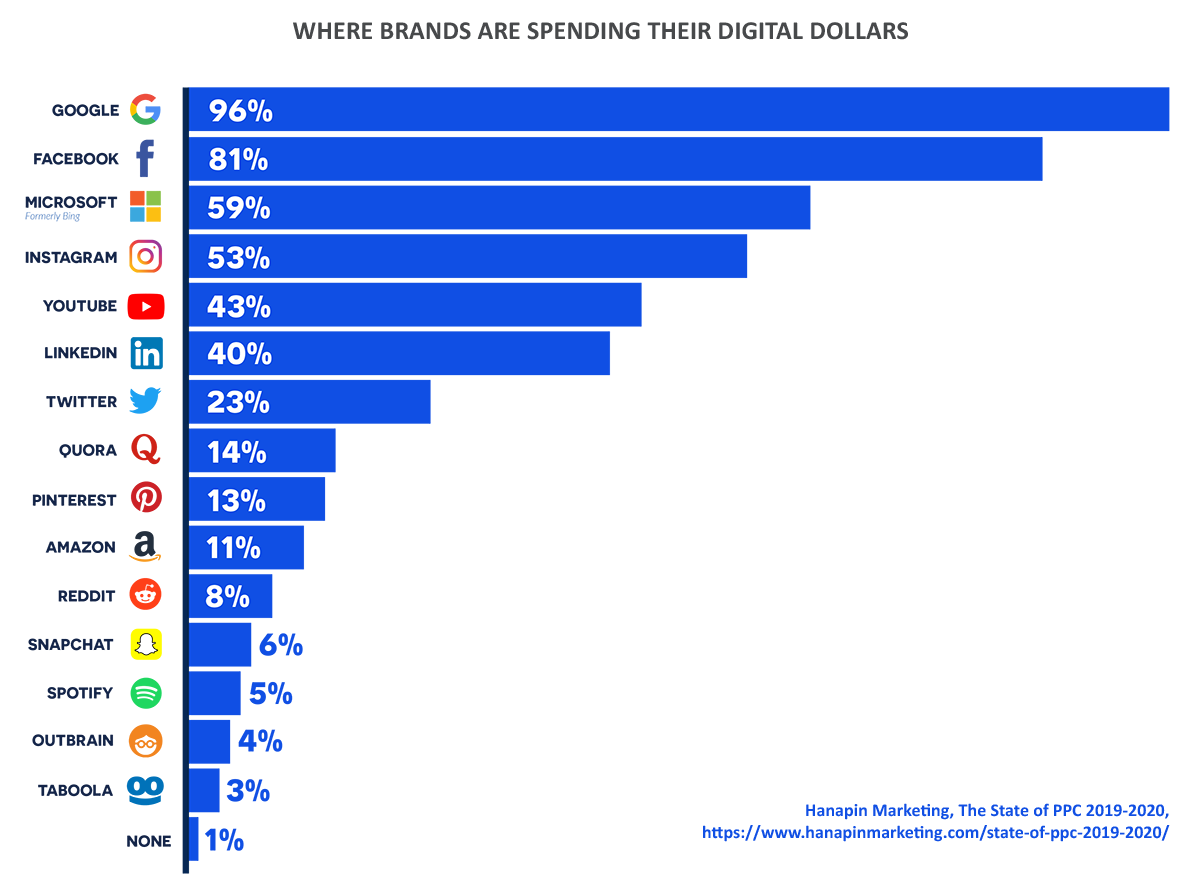
One big surprise here? Amazon. Amazon ads are exploding, and yet only 11% of the PPC marketers in this survey said they were using them. That’s only a 2% increase since the year prior, when 9% of marketers said they were using Amazon Ads. We smell an opportunity…
Also take note of YouTube in this chart. Currently, 43% of marketers are using it. But 46% of marketers plan to spend more money on YouTube in the next 12 months, putting it only third behind Google and Facebook. According to Hanapin, more marketers plan to invest in YouTube next year than even Instagram – or Amazon.
- Managing PPC is expensive.
PPC is effective. But it’s also somewhat expensive. For many marketers, the benefits of great tracking capabilities, control, and predictability far outweigh the downside of the extra costs.
But PPC also has a learning curve. And even with the help of automation, that learning curve is significant. This drives many marketers and small business owners toward outsourcing their PPC.
Outsourcing is often a smart move, but if you’re price sensitive, it could be more bad news. The hourly rate for PPC services is usually well above $100 an hour. 20% of the time, it’s above $200 per hour.
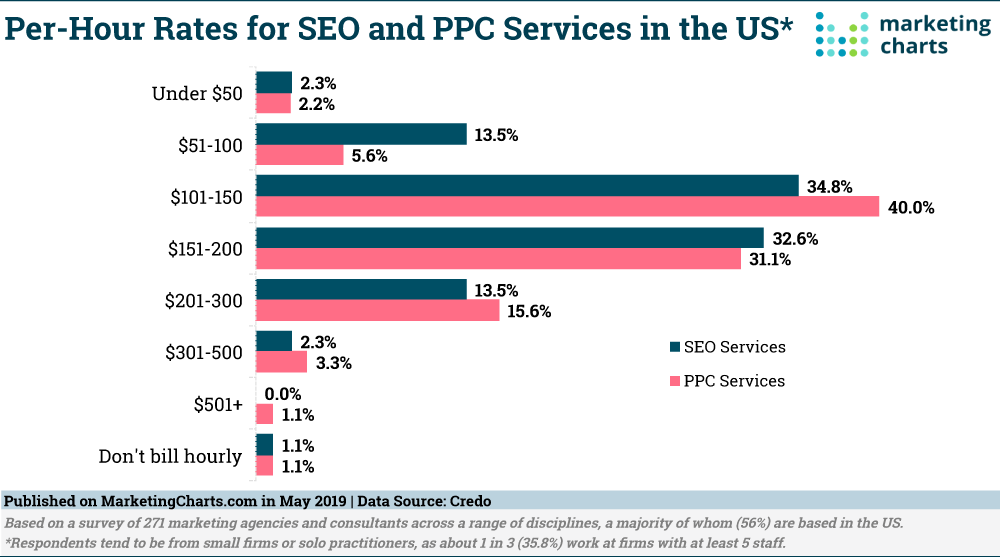
We can’t help thinking about automation when we look at these prices. Most business owners would itch at the idea of paying someone $100+ per hour simply to update bids. That doesn’t mean PPC services aren’t worth the expense, though – a good PPC service can save a business thousands of dollars a month or more. It’s just that most business owners will want to automate as much of campaign management as they can, if only to focus PPC pros’ skills on high-return optimizations.
- Video ads are used nearly as much as image ads on Facebook.
Video ads are an increasingly popular PPC ad format. An August 2019 study of over 10,000 Facebook ads found that video ads are widely used. Among large enterprises, they’re used nearly as much as image ads.
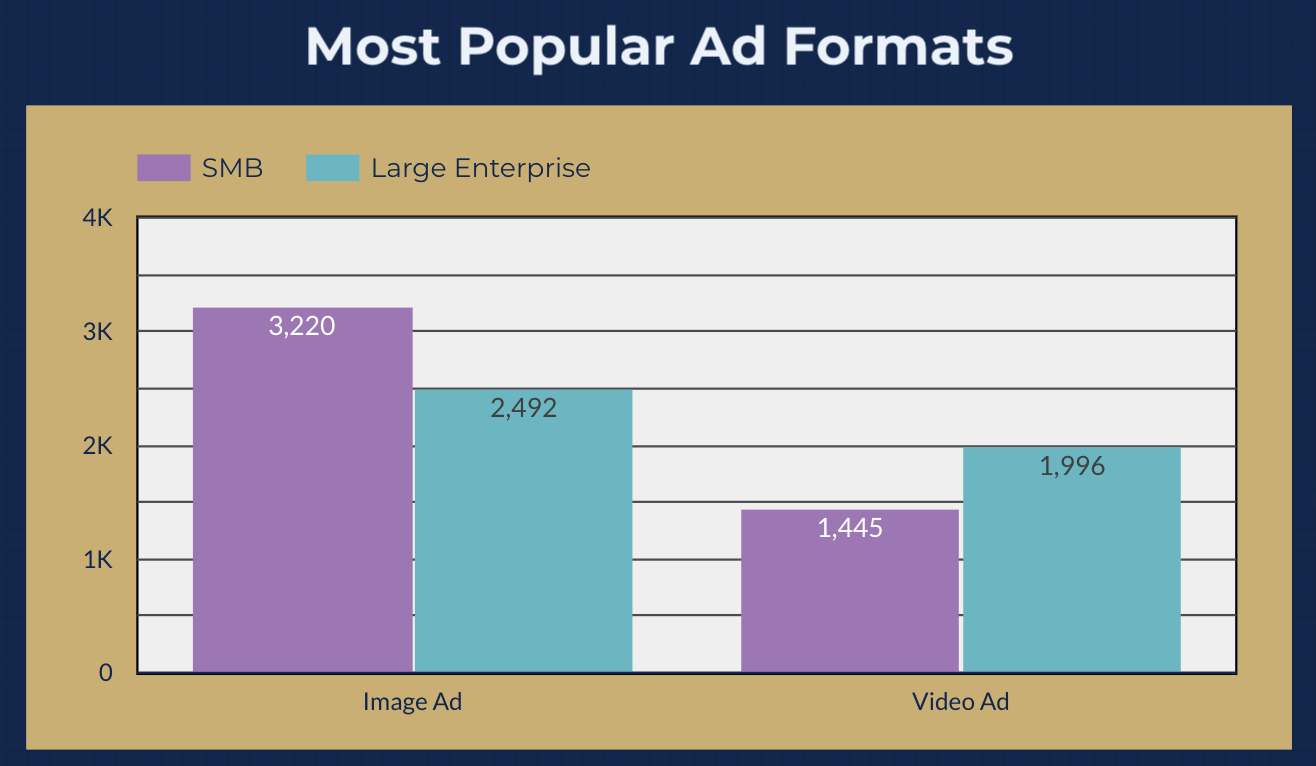
This is interesting, especially when you remember how many advertisers plan to invest in YouTube next year. Video is gaining traction in PPC. If you aren’t already creating video ads (and lots of them) maybe that should become a priority in 2020.
- Click to call PPC ads do better than you’d think.
With all the ways consumers can find and evaluate businesses before they ever become customers, you might think that old-fashioned telephone calls don’t get used that much anymore. But you’d be wrong. Google My Business listings generate more phone calls than they generate directions.
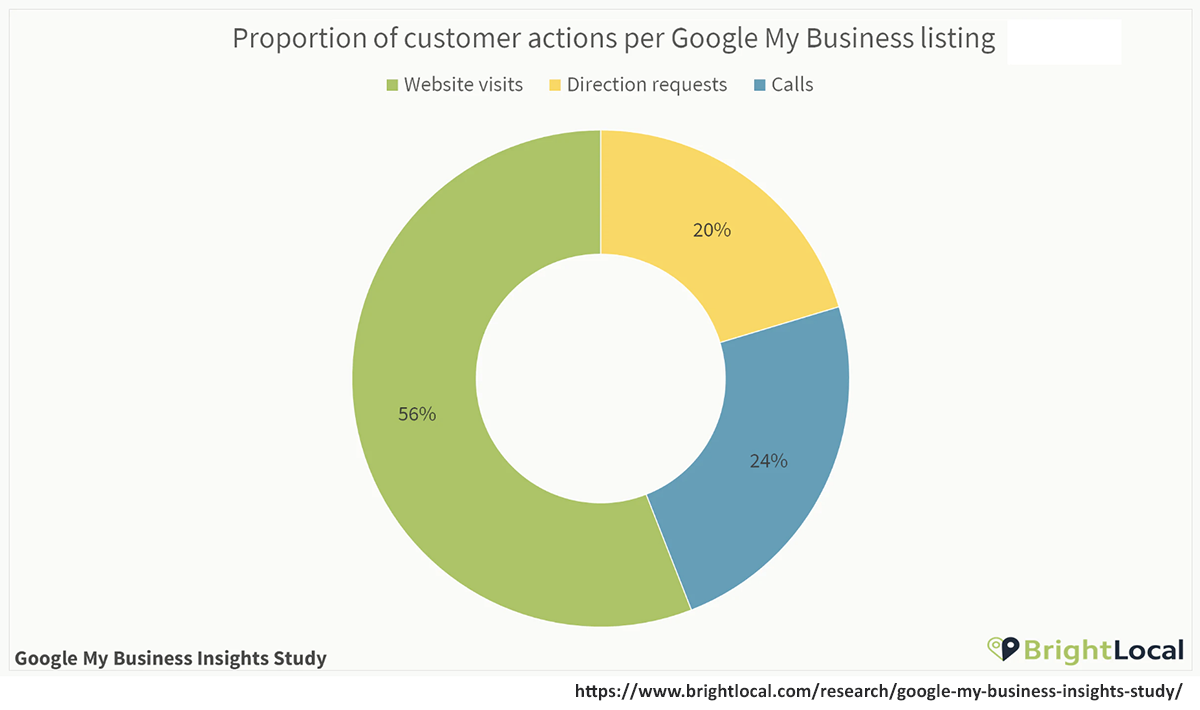
And most of those Google My Business listings are triggered by searches.
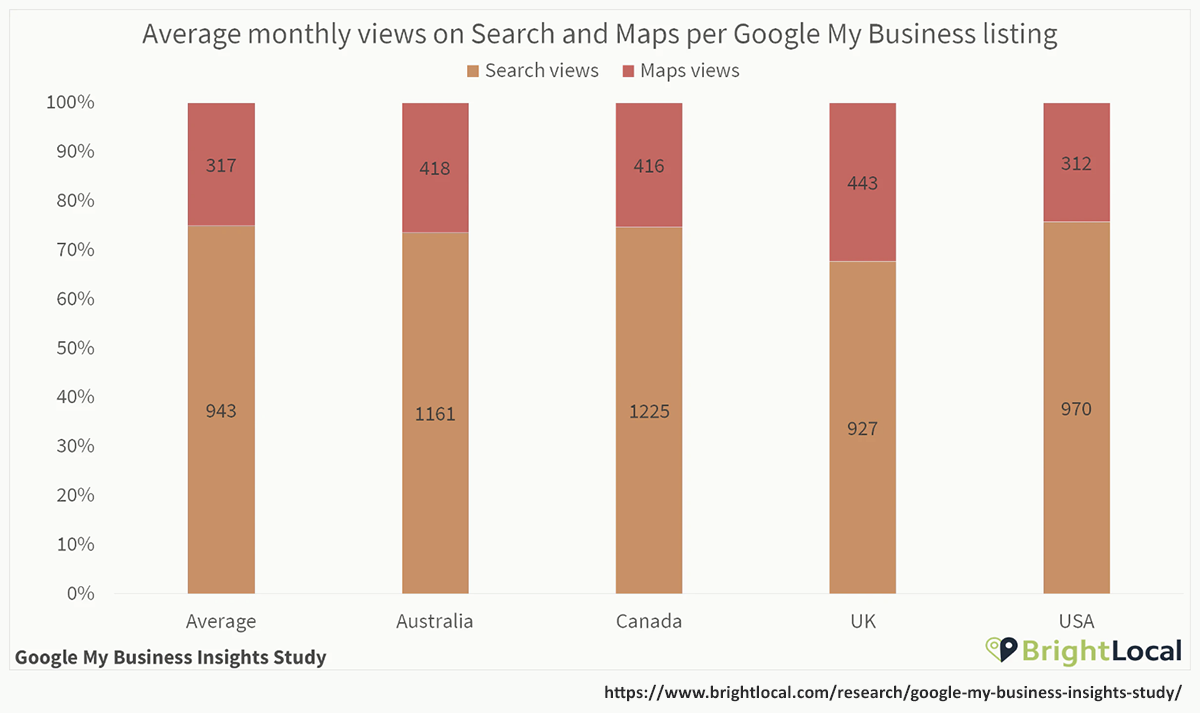
- Small businesses are still holding back from PPC.
According to Taradel’s 2019 Small Business Marketing Survey, 35.65% of small businesses intended to use “Paid Search / Google Ads” in their 2019 marketing tactics. 20.43% intended to use “Digital Banner Ads,” aka Display Ads.
That’s a good start, but unfortunately, only 9.61% of marketers in that study said that Paid Search and Google Ads got them the highest ROI of all the marketing channels they use.
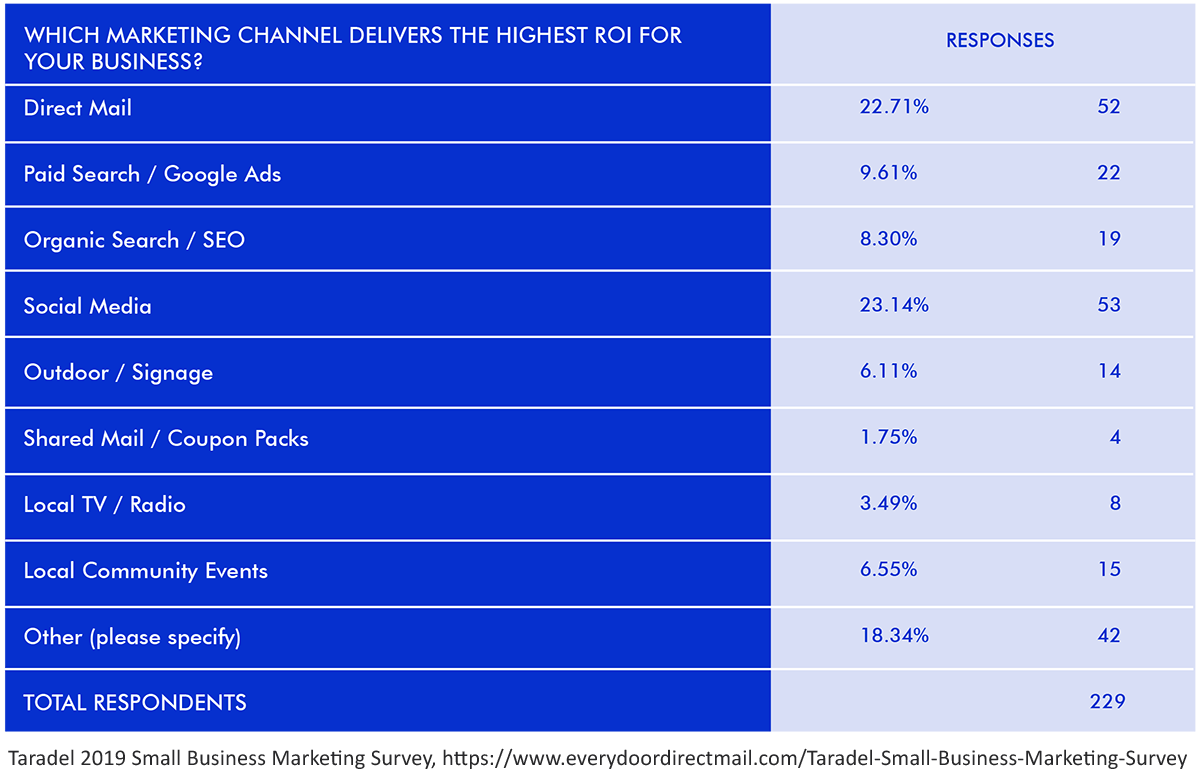
That was a little puzzling until we looked deeper. And then we found the reason why: Budgets.
51.3% of the marketers in that survey reported that they spend $499 or less per month on marketing. All their marketing. Only 16% said they spend more than $2,500 per month – again, on all their marketing. If you remember from point #4 above, most PPC management services cost $100 or more per hour and sometimes much more. For many small businesses, even $100 is a significant chunk of their monthly marketing budget.
This lines up with many other small business surveys we’ve seen before, including Outbound Engine’s 2019 Small Business Survey. That study found 54.45% of small businesses spend zero to five percent of their annual revenue on marketing.
Unfortunately, this frugality doesn’t appear to be working. Outbound’s study found that “eighty-one percent of respondents who invested between 5 and 10 percent of annual revenue in marketing said they experienced revenue growth in 2018, compared to just 50 percent of respondents who invested less than 5 percent of revenue.” The less these businesses spend on marketing, the slower they grow.
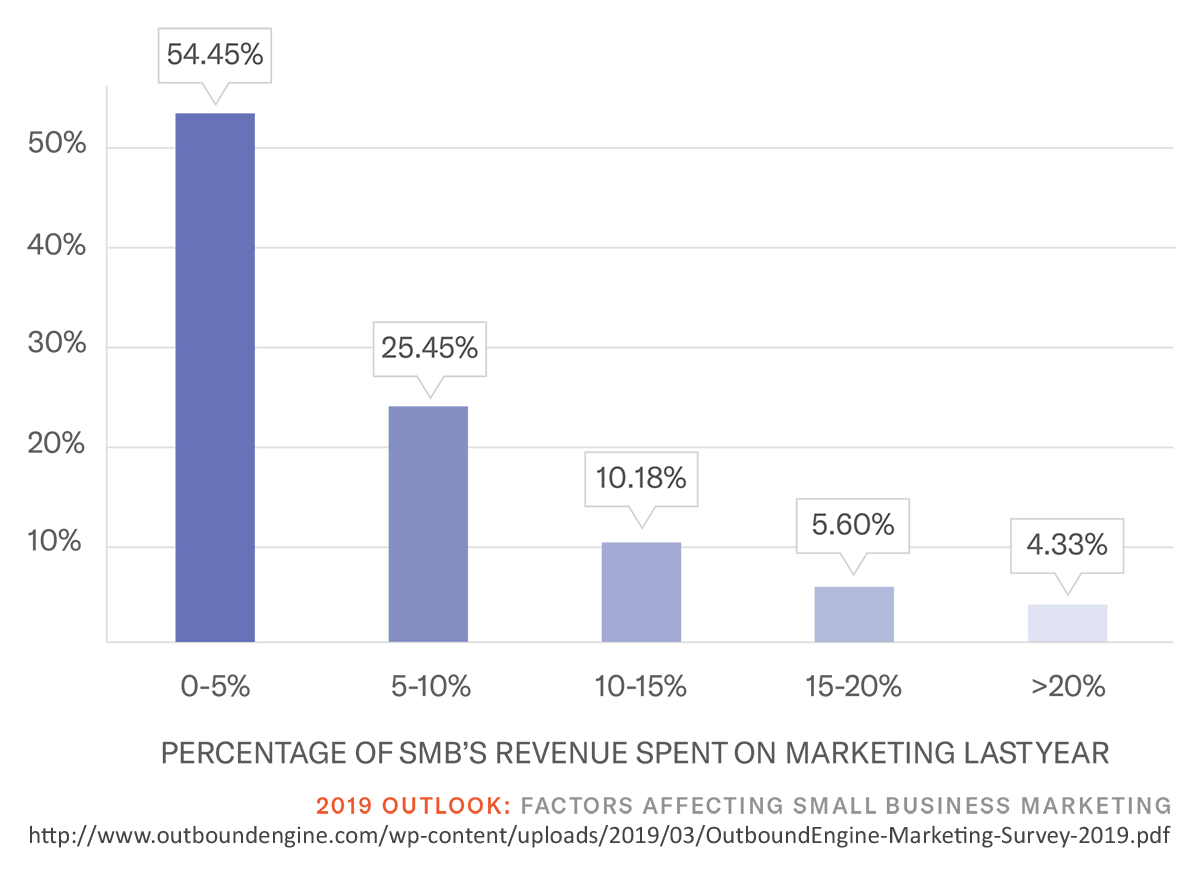
Here’s the key takeaway to all this in terms of PPC: If PPC platforms like Google and Facebook want more small businesses to invest in PPC, they may need to figure out a way to reduce the cost. To their credit, the automations we’re seeing from PPC platforms (and from third party tools) are helping small businesses maximize ad spend and save time. But it appears there’s still a long way to go.
- Enterprise marketers don’t expect big impacts from PPC in the near future, but they do expect AI and machine learning to make a major impact.
A study of marketers at larger companies from Smart Insights found that only 2.2% of marketers expect PPC to have “the largest commercial impact in 2019.” Only 1.5% expect Display ads to deliver a big impact. But they do expect AI and machine learning to have significant impacts.
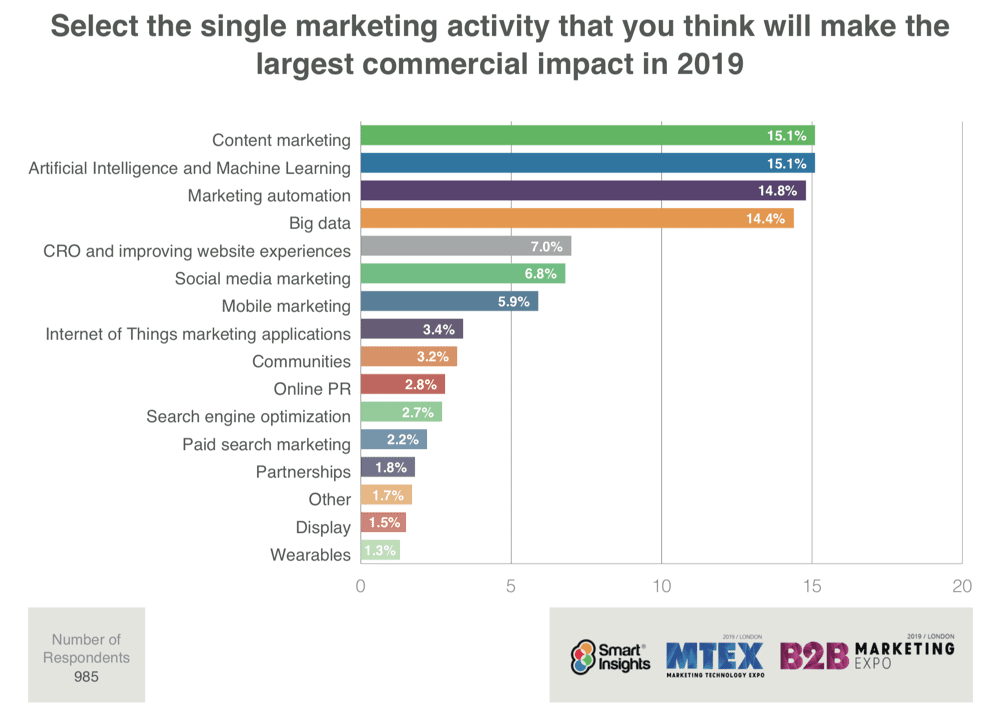
We think these marketers may be overlooking some of the more interesting developments in PPC, like ad extensions and audience targeting. But perhaps these are still considered advanced PPC tactics, or they’re simply not impressing marketers as much as other emerging technologies.
These marketers do think AI and machine learning will have a big impact. And they’re right – AI and machine learning are quietly changing almost everything in digital marketing, from automating aspects of PPC, to managing content and product recommendations, to shaping search results and image search and more.
- Machine learning is making PPC marketers more efficient.
There’s been a lot of anxiety and uncertainty around machine learning, especially for PPC marketers. Will it take their jobs? Will it force them to relearn everything about PPC? But while there are concerns, so far machine learning has been helpful. 84% of the marketers surveyed by Hanapin reported it was speeding up their work.
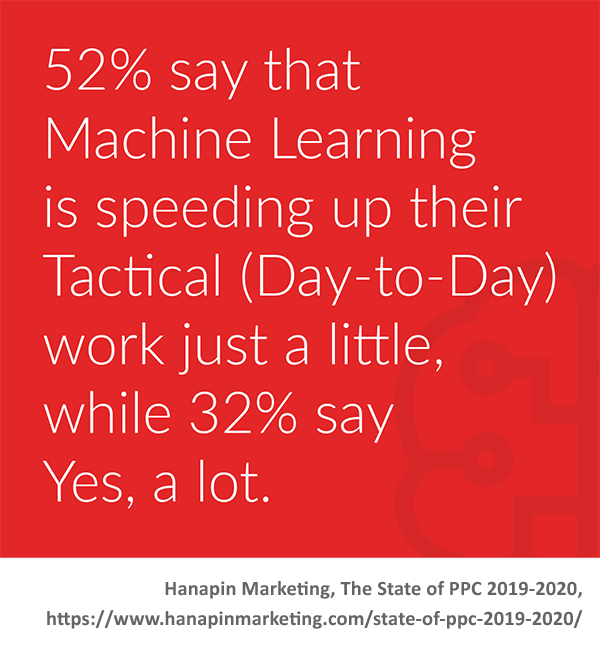
- Local Services Ads are cannibalizing local PPC ads.
Local Services Ads are a relatively new ad format from Google Ads. They tend to work well, but some of that success is coming at the expense of regular PPC ads, as shown below.
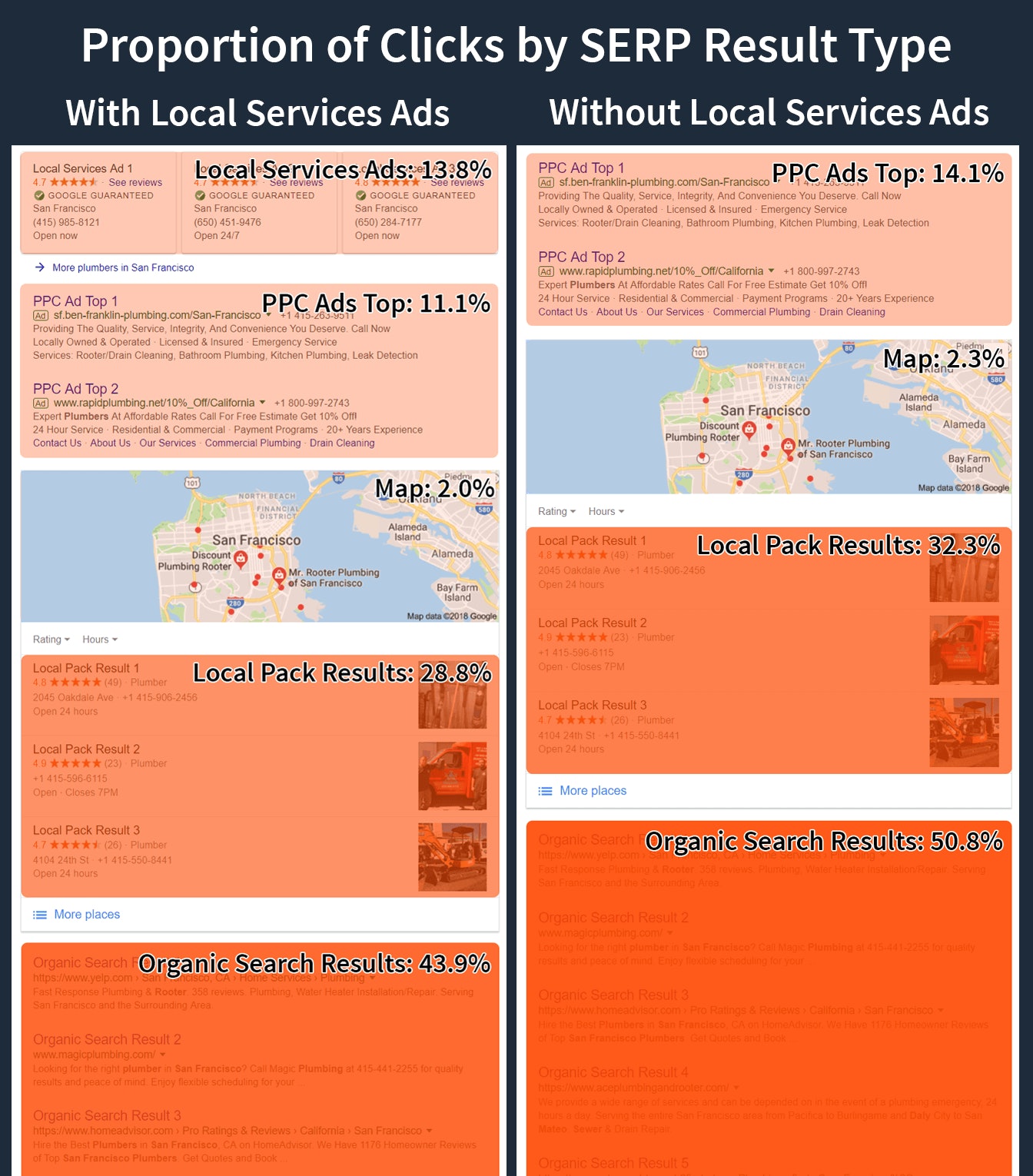
This probably won’t have a huge effect on local PPC ads, though it is clearly affecting them to a certain extent. But it is a symptom of a larger trend: Organic results getting pushed down further and further and further as Google adds more search features.
This particular example is interesting because it shows Google is willing to push its own PPC ads down in favor of a new ad format.
- Marketers leverage many sources to stay current with PPC.
In regard to how PPC marketers need to constantly be learning, consider this chart from Anders Hjorth’s Major Trends in Paid Search.
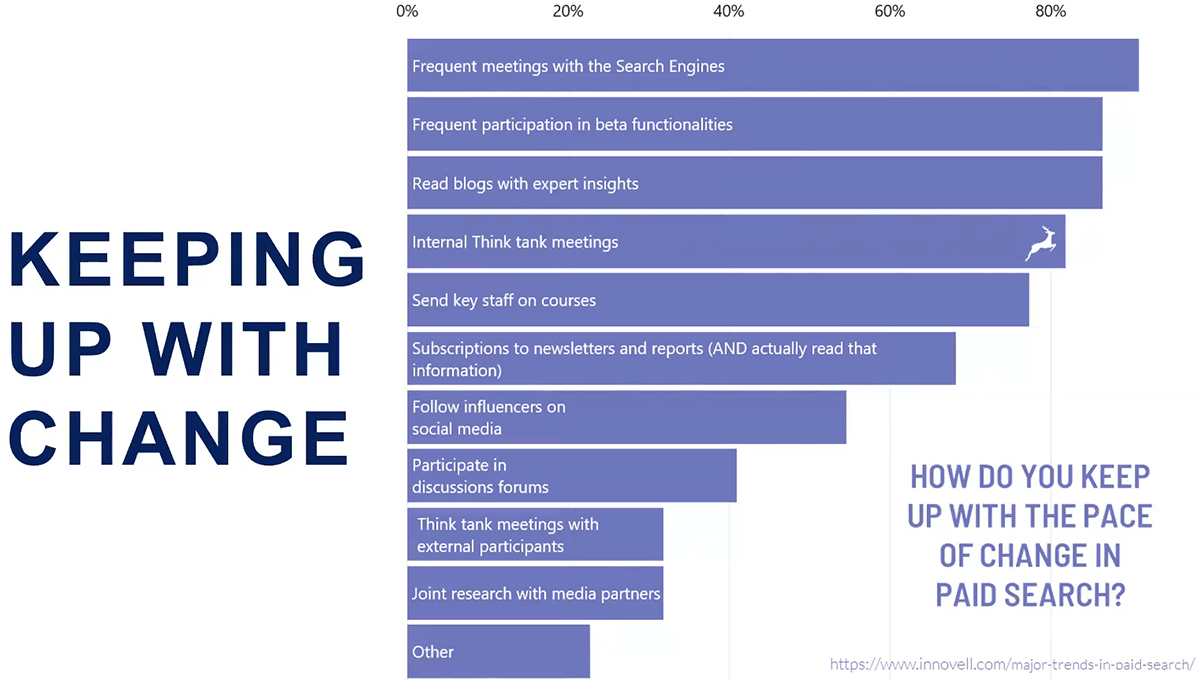
Marketers are mostly keeping up with the change in the PPC industry by working closely with the search advertising platforms. They’re also reading blogs, taking courses, and seeking out high-quality newsletters and reports. So if you haven’t called your Google or Facebook rep in a while, consider doing that… your competitors have probably done so already.
- Marketers are starting to pair conversion rate optimization with PPC.
Clicks are money… and so smart marketers want to get as much return from every click that they can. One of the best ways to do this is to test landing pages.
It’s interesting to see testing and conversion rate optimization rise up as a priority for marketers. This is exactly the sort of high-return activity PPC marketers can do more of now that automation is taking some of the duller work, like bid edits, off their plates.

This interest in conversion rate optimization also complements what we’re seeing with the adoption of machine learning and AI in PPC. The 2019 Acquisio Machine Learning Performance Report found that 63% of the accounts using Acquisio saw an increase in conversion rate.

Conclusion
So PPC still works, the duopoly is intact (despite competition from Microsoft Ads and Amazon), video ads and click to call ads are gaining traction, and small businesses may need some help to embrace PPC as much as enterprise businesses do.
Meanwhile, machine learning and AI are making everything easier, from bid edits to optimizing conversions and reducing cost per click. Expect machine learning and AI to become more useful – and more widely used – as PPC continues to evolve. Hopefully, that will help more small businesses use PPC and it will help more advanced marketers optimize their campaigns even more.
IMAGES
- Unsplash, Sebastian Staines.
2-4, 12, 15. Hanapin Marketing’s State of PPC 2019-2020 report.
- Credo via MarketingCharts.com
- Jeffalytics.
7-8, 13. Brightlocal.
- Taradel’s 2019 Small Business Marketing Survey.
- Outbound Engine’s 2019 Small Business Survey.
- Smart Insights.
- Acquisio webinar, Lessons from Award-Winning Paid Search Campaigns.
- The 2019 Acquisio Machine Learning Performance Report.
